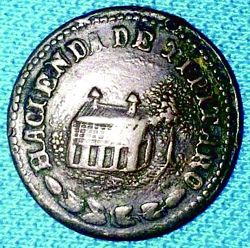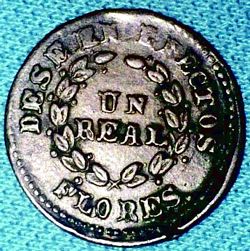Hacienda tokens from Michoacán (earlier)
Because the federal government did not provide enough fractional coins (1/4 and 1/8 real) and the state government of Michoacán did not produce them so municipalities, haciendas and even private citizens were “allowed” to make their own.
Hacienda BuenaVista
Grove 431
Obverse: HACIENDA DE / BUENAVISTA and in the centre the initials JFV
Reverse: 1848
24mm. bronze
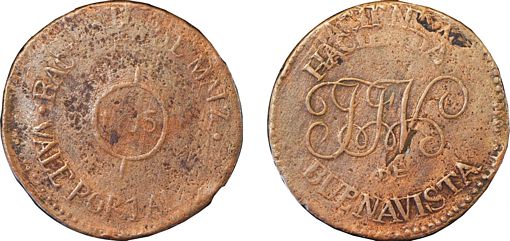
Rulau-Mic64
Obverse: HACIENDA / DE / BUENAVISTA and in the centre the initials JFV
Reverse: RACION DEL MAIZ / VALE POR 1 ALMUD and in the centre 1855
29mm. copper
The initials JFV stand for José Francisco Velarde, known as "Burro de Oro". An almud is a measure of maiz.
Hacienda de la Huerta
Grove 432
Obverse: 2R / ACIENDA / DE LA / HUERTA
Reverse: oak wreath and cattlebrand
23mm. bronze
Hacienda San Rafael
Grove 435
Obverse: HACIENDA DE SAN RAFAEL around monogram Y C
Reverse: 1847 / ¼
24mm. bronze
Hacienda de Santa Efigenia
Grove 437
Obverse: HACIENDA DE SANTA EFIGENIA
Reverse: / A / 1840
22mm. bronze
Grove 438
Obverse: HACIENDA DE SANTA EFIGENIA around monogram JA (for José Aspero) and arrow
Reverse: 1846 / ⅛
24mm. bronze
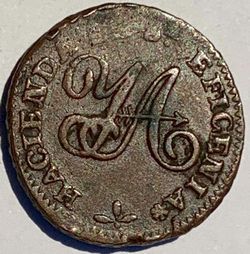
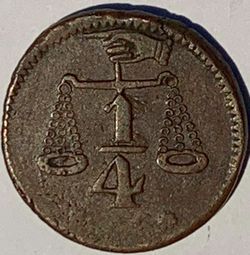
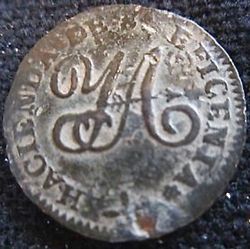
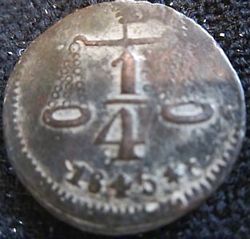
Grove 439
Obverse: HACIENDA DE SANTA EFIGENIA around monogram JA
Reverse: ¼ / 1845
25mm. bronze
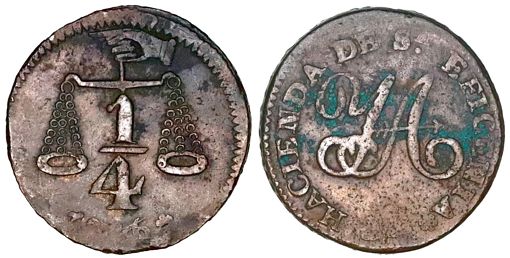
(Sedwick Treasure Auction 28, 17 November 2020, lot 1117)
Grove 439
Obverse: HACIENDA DE SANTA EFIGENIA around monogram JA
Reverse: ¼ / 1846
25mm. bronze
Hacienda del Tejamanil
Grove 440
Obverse: HDA DEL TEJAMANIL around volcano
Reverse: VALOR DE MEDIO REAL / 1858
19.5mm. bronze
Grove 441
Obverse: HDA. DEL TEJAMANIL / ⅛
Reverse: ⅛ / 1858
19mm. bronze
Grove 442
Obverse: HDA. DEL TEJAMANIL / ¼
Reverse: ¼ / 1858
19mm. bronze
Hacienda de Tipitaro
Grove 443
Obverse: HACIENDA DE TIPITARO
Reverse: MEDIO REAL AÑO DE 1846
24mm. bronze
Grove 444
Obverse: HACIENDA DE TIPITARO
Reverse: DESE EN EFECTOS / UN / REAL / FLORES
24mm. bronze
Taretan
Hacienda de Tomendánfrom Ricardo Vargas Verduzco, "Hacienda de Tomendán in Taretan", in USMexNA journal, March 2017
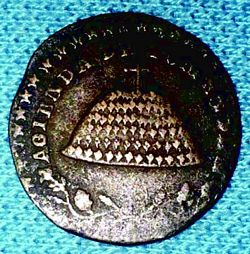
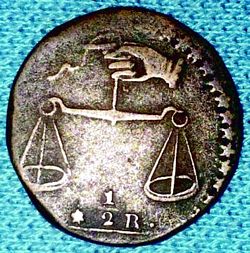
Grove 445
Obverse: around a hill with a cross on top HACIENDA DE TOMENDAN
Reverse: hand holding balance ½R
20mm. copper
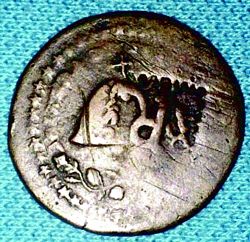
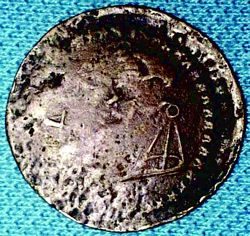
Obverse: around a hill with a cross on top, counterstamped R
Reverse: hand holding balance
25mm. copper
Hacienda de Tomendán was a very old and prosperous sugar hacienda in the municipality of Taretan, Michoacán. It has been recorded since the eighteenth century as a big property owned by Agustín Solorzano y Abarca who was Regidor Depositario General of Patzcuaro. When Agustín died, he bequeathed the hacienda to his son Agustín Solorzano who made an empire of it. The hacienda was valued at 97,000 pesos back in 1792 and by the 1830s it was valued at 132,600 pesos. The Solorzano’s family made a sweet fortune with sugar from Tomendán.
Agustín Jr., in order to make his hacienda even more productive, started a partnership with his second cousin, Agapito Solórzano. The precise amount of Agapito´s initial investment is unknown but the profits were spectacular: between 1846 and 1850 the hacienda produced 100,000 pesos in profit.
During that period of time and the 1850s is when I believe the hacienda tokens of Tomendán appeared, not only because the hacienda was running at high speed but also because most of the hacienda and municipal tokens appeared during this period. In this article I want to present another hacienda token from the Hacienda de Tomendán. This coin is practically identical to its little sister, but different in size and weight. The face value is not legible due to a counterstamp with the letter R, probably meaning “Real” but dimensions and weight made me conclude that the piece must be a one real value.
Hacienda tokens with a face value of one real are not common. Not many have been cataloged for the country and the only other one example from Michoacán that I have knowledge of is precisely the one from Hacienda de Tipítaro, also located in the municipality of Taretan. The Hacienda de Tipítaro was neighbor to Hacienda de Tomendán, and they share a border.
The Tomendán Hacienda did not remain long in the Solorzano family. Agustín sold it in 1859 to Josefa Gómez, a powerful woman who in 1858 married Santiago Sosa, the son of Vicente Sosa, a wealthy merchant. Due to the bad administration of her husband, seven years after the purchase Josefa took on a refaccionario, the firm Ruiz y Erdozain, who ran the huge hacienda of Guaracha. In 1874, submerged in a mountain of debts, she sold the hacienda to Ignacio Erdozain for 35,000 pesos. Later with the Mexican Revolution the hacienda started to lose land and during the presidency of Lazaro Cardenas it was dissolved and transformed into a communally-held ejido.

